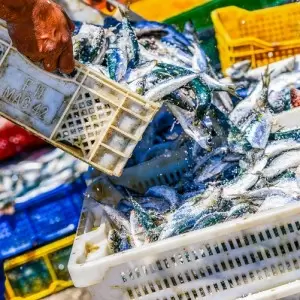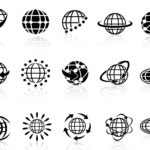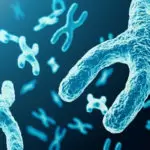
For centuries, humans have relied on the ocean for subsistence by harvesting its abundance of fish. In recent decades, new technologies have allowed humans to remove fish from the ocean on a massive scale to supply Earth's burgeoning population. Unfortunately, there are many negative environmental consequences to these practices and overfishing has been identified as a primary cause of ecosystem collapse in many aquatic systems.
Overfishing
One of the chief consequences of industrial fishing is that some species have been overfished to the point of near extinction. Perhaps the best known example of this comes from the Atlantic cod. In the 17th century, people said that cod was so plentiful in the Northwest Atlantic that you could walk across the ocean on their backs. During the era, cod fishing formed the foundation of the New England economy and many people relied on fishing cod for their livelihood.1 In the 1960's, new technologies like radar and sonar enabled fishermen to fish much deeper for cod and to catch them much more rapidly. Landings of cod began to skyrocket over the next few decades, but the fishery collapsed dramatically in the 1990's. The area off Newfoundland, formerly the largest cod fishery in the world, had estimated declines in cod biomass of more than 99%. Six additional stocks off the coast of Canada had all declined in biomass by 75% or greater.2 The number of fish became so few that Canada enacted a moratorium on cod fishing to allow stocks to recover.3 The United States has also placed severe restrictions on the industry, cutting back the amount of time that people can fish and reducing the total amount of cod that could be caught.
Shutting down the industry in Canada had consequences that reverberated throughout coastal regions. Many people saw their livelihoods vanish and unemployment became widespread. Coastal communities dwindled as people moved to other areas in search of employment.3 In addition to these socioeconomic changes, the ocean was also greatly altered by the removal of cod, which had formerly been a major predator. With the their major predators gone, animals that had formerly been the prey of cod, such as shrimp and snow crab, were released from predatory controls and proliferated. This fundamentally altered the food web and functioning of the ecosystem.4
This type of phenomenon, in which the removal of large predators causes population explosions of their prey, is deemed a trophic cascade and is a common consequence of overfishing. Exploitation of sharks has increased dramatically in the past several decades, driven in part by an increased demand for shark fins and meat.5 In the southeastern United States, abundances of many formerly common sharks have decreased by more than 99% in some species. Cownose rays formed a major component of the diet for many of these sharks, and with the shark population diminished, these rays have virtually no predators in the ocean.5 As a result, the increased cownose ray population has preyed heavily on bay scallops, one of their preferred prey items. The bay scallop fishery was once profitable along the Eastern seaboard, but huge population declines in bay scallops from cownose ray predation have rendered the fishery obsolete.5 The waters of many areas along the coast are now closed to fishing in hopes of a recovery of the bay scallop.6 These examples illustrate how overfishing impacts more than just a single species of fish, as their removal can have consequences for the entire ecosystem.
Habitat Destruction
In addition to removing an increasingly large number of fish from the ocean, many industrial fishing practices also destroy aquatic habitat. Dredging is a practice commonly used to harvest clams and employs a large metal scoop that drags along the seafloor to pick them up. The process also churns up sediments along the seafloor, causing them to become suspended in the water column, decreasing water quality.7 The practice can also dig up burrowing worms from the sediments. These animals are important because their burrows increase contact between sediments and the water. This returns nutrients to the water, where they are used by microorganisms in nutrient cycling. Without these burrowing animals, waters along the seafloor can become depleted of oxygen and uninhabitable.8
Seafloor trawling, in which equipment is pulled across the seafloor to catch bottom-dwelling fish, decreases the biomass and production of benthic species.9 The practice also practice destroys corals, oysters and sponges that form productive marine habitats. The impacts of the destruction can be far-reaching. Oyster reefs, for example, have been decimated in many places from trawling. Without these important filter feeders, coastal waters can suffer from eutrophication, in which there are too many nutrients in the water. This in turn causes harmful algal blooms that can cause widespread die-offs of marine life.10
In tropical regions, people sometimes employ blast fishing. In this method, fishermen light sticks of dynamite and toss them into the water. The explosion stuns nearby fish and can make their swim bladders rupture, causing them to float to the surface for easy capture. With up to $2,000 worth of fish being caught from a single blast, the process can be lucrative for fishermen, but destroys coral reef habitat in the process.11 Like oyster beds, coral reefs are productive habitats that serve as nurseries for many fishes. With these important developmental habitats gone, stocks of many species of fish can rapidly decline. Many of these species are also commercially valuable, so although the short-term payoff is large, the practice can actually be harmful to fishermen in the long run. Furthermore, people also lose the valuable ecosystem services provided by coral reefs, such as coastal protection and revenue through tourism.
Derelict Fishing Gear
Some kinds of fishing gear can be even more destructive when they become lost or forgotten in the water because they continue to catch animals, a phenomenon known as “ghost fishing.” This is particularly wasteful and destructive because the gear can ensnare tons of animals that aren't being harvested or used in any way. Fishing piers can be sites of ghost fishing as lures and lines become wrapped around pilings, where animals swimming by become trapped.12 Fish are not the only victims, however, as birds that dive into the water for prey can also get caught in the lines when they enter the water.
Diamondback terrapins provide a case study of how ghost fishing can impact animal populations. These turtles inhabit salt marshes along the East Coast where people also fish for blue crabs. Blue crabs are caught using a crab pot, a metal cage that is dropped to the floor of the marsh and tied to a buoy that floats along the surface. If the buoy becomes detached, fishermen may not be able to find the gear, and it becomes a “ghost pot.” Crab pots have tiny openings that allow crabs to enter, but are constructed in a way that makes it difficult for them to get back out. Terrapins also swim into the pots, attracted by the bait in the middle. Because they are social animals, when several turtles are in a pot, it often draws in other individuals, leading the ghost pot to catch more and more turtles over time. A single ghost pot was discovered in Georgia that contained more than 130 deceased turtles.13 This fishing gear is thought to pose a major threat to many populations of diamondback terrapin.
In addition to direct mortality, ghost pots can also alter population demographics. This is because female terrapins are larger than males and females often cannot fit into the openings in crab pots. As a result, the pots trap males and younger turtles at a higher rate, shifting the population to older turtles and females.14 This biased sex ratio, along with the removal of many individuals before they reach sexual maturity, can further exacerbate declines already faced by these populations.
Bycatch
While many fishing practices can be extremely adept at harvesting fish, they also often incidentally catch non-target species, known as bycatch. Longline fishing is one of the major bycatch culprits. This practice is often employed in the open ocean and consists of miles of lines off of which thousands of baited hooks are attached and a single long line can have more than 2,500 hooks. Sea turtles are especially prone to capture in longlines since they must reach the surface of the ocean to breathe. When they go for the bait on the lines, the hooks become lodged in their mouths and they drown because they cannot reach the surface. Even when they are not attracted by the bait, some turtles are so large that the lines can become wrapped around their flippers as they swim through them. Marine mammals often become trapped in the lines as well. Birds like albatross that fly over the open seas are attracted by the bait as the lines are put into the water. Once hooked on the line, they are ensnared in the gear and soon drown.15
Other fishing practices can also incur large amounts of bycatch. Trawling can drown turtles that get caught in nets. Gillnets are staked to the ocean floor and entrap many animals unintentionally. The collective toll from these practices is staggering. Over the past twenty years, an estimated 85,000 sea turtles have been killed as bycatch.16 Additionally, an estimated 300,000 marine mammals, 160,000 albatross and 3 million sharks are lost to bycatch from fishing practices each year.17 This high rate of mortality is not sustainable for these animal populations. Animals like albatrosses and sea turtles that are long-lived and slow to reach maturity are particularly impacted by these threats and many populations have declined precipitously over the past few decades.
As with the other impacts from fishing, consequences of bycatch are often far-reaching as species become functionally extinct in many areas. For example, leatherback turtles are major predators of jellyfish, capable of consuming more than 600 jellyfish in a single day.18 With their major predators gone, there have been jellyfish population booms in some parts of the ocean. This has made the waters dangerous for swimmers in some places that rely on tourism as a revenue source and can also prevent the recovery of depleted fish stocks. Green sea turtles and manatees, which are commonly victims of bycatch, also demonstrate the ecological complexities that can occur after the removal of important functional species. These animals are herbivores that graze in seagrass beds. In these habitats they are important because their constant grazing keeps the grass at a healthy level, contributing to nutrient cycling and preventing disease outbreaks from spreading through the grass beds.19 Without these grazers, many seagrass ecosystems have suffered from large seagrass die-offs. When this happens, biodiversity declines as these habitats can no longer support a wide range of marine life.
Solutions
In recent years, the consequences of fishing have increasingly become the source of research interest. Much of this has been prompted by the collapse of commercially valuable fisheries, as well as the threat of extinction to many animals. For some species, like bluefish and flounder in the mid-Atlantic, implementing catch limits has been successful in bringing back depleted stocks. For other species like the Atlantic cod, however, such regulations have not resulted in a rebounding of the population.20 In these instances, there may be other factors such as increasing water temperature that inhibit recovery.
Research has also focused on new methods of fishing that are less destructive. For example, studies on diver harvesting of oyster showed that the technique was less damaging to the structure of the reef than traditional methods like dredging. Whereas the latter method indiscriminately picks up all oysters, including those that are dead on the reef, diver harvesting is more selective and only collects those that are commercially valuable. The practice was also shown to increase the amount of oysters harvested per unit time of fishing.21
There has likewise been much investigation into techniques that reduce fisheries bycatch. For example, studies on longline hooks have shown that certain hooks do not get stuck in the mouths of sea turtles, which reduces their risk of capture.22 Acoustic pingers on fishing vessels have been shown to deter marine mammals and reduce their bycatch rates in the California drift gill net fishery.23 Swordfish longline fisheries employ lights to attract fish, but they also attract leatherback turtles as well. Research on turtle light perception has shown that certain light frequencies are not visible to turtles, but are still attractive to swordfish.24 This offers a mechanism of reducing bycatch without impacting the catch of target species. For crab pots, bycatch reduction devices are tiny plastic rings that are attached to the openings. These make the openings smaller so that blue crabs can still get in while keeping terrapins out.25
One of the largest success stories of bycatch reduction has been the use of turtle excluder devices (TED) in shrimp trawlers. In the Gulf of Mexico, bycatch of Kemp's ridley turtles in shrimp trawlers was cited as a major factor in declines of the species. The TED is a large grate that is attached to the inside of the net and an opening in the net is placed next to it. Shrimp easily pass through the grate, but turtles cannot get through it. When they come into contact with the grate, the opening in the net provides a way out and the turtle can leave the net unscathed. Reduction in bycatch from using this device has led to significant recovery of Kemp's ridley turtles in the Gulf of Mexico.26 These avenues of research offer solutions that can ease the harmful environmental consequences of fishing and allow fishing practices to proceed in a more environmental friendly method in the future.
Sources
- Seelye, K. and J. Bidgood, 2013. Officials Back Deep Cuts in Atlantic Cod Harvest to Save Industry. New York Times; Available from: http://www.nytimes.com/2013/01/31/us/officials-back-deep-cuts-in-atlantic-cod-harvest-to-save-industry.html?pagewanted=all&_r=1&.
- Myers, R.A., J.A. Hutchings, and N.J. Barrowman, Why do fish stocks collapse? The example of cod in Atlantic Canada. Ecological applications, 1997. 7(1): p. 91-106.
- Hamilton, L.C. and M.J. Butler, Outport adaptations: Social indicators through Newfoundland's cod crisis. Human Ecology Review, 2001. 8(2): p. 1-11.
- Frank, K.T., et al., Trophic cascades in a formerly cod-dominated ecosystem. Science, 2005. 308(5728): p. 1621-1623.
- Myers, R.A., et al., Cascading effects of the loss of apex predatory sharks from a coastal ocean. Science, 2007. 315(5820): p. 1846-1850.
- Queram, K., 2013. N.C. waters to open for bay scallop harvest. Star News Online; Available from: https://www.starnewsonline.com/article/NC/20130117/News/605025766/WM.
- Thrush, S.F. and P.K. Dayton, Disturbance to marine benthic habitats by trawling and dredging: implications for marine biodiversity. Annual Review of Ecology and Systematics, 2002: p. 449-473.
- Coleman, F.C. and S.L. Williams, Overexploiting marine ecosystem engineers: potential consequences for biodiversity. Trends in Ecology & Evolution, 2002. 17(1): p. 40-44.
- Hiddink, J., et al., Cumulative impacts of seabed trawl disturbance on benthic biomass, production, and species richness in different habitats. Canadian Journal of Fisheries and Aquatic Sciences, 2006. 63(4): p. 721-736.
- Jackson, J.B., et al., Historical overfishing and the recent collapse of coastal ecosystems. science, 2001. 293(5530): p. 629-637.
- Njoroge, G., 2014. Blast fishing destroying Tanzania's marine habitats. BBC News Africa; Available from: http://www.bbc.com/news/world-africa-29049264.
- Matsuoka, T., T. Nakashima, and N. Nagasawa, A review of ghost fishing: scientific approaches to evaluation and solutions. Fisheries Science, 2005. 71(4): p. 691-702.
- Grosse, A.M., et al., Diamondback terrapin mortality in crab pots in a Georgia tidal marsh. Chelonian Conservation and Biology, 2009. 8(1).
- Dorcas, M.E., J.D. Willson, and J.W. Gibbons, Crab trapping causes population decline and demographic changes in diamondback terrapins over two decades. Biological Conservation, 2007. 137(3): p. 334-340.
- Lewison, R.L., et al., Understanding impacts of fisheries bycatch on marine megafauna. Trends in Ecology & Evolution, 2004. 19(11): p. 598-604.
- Wallace, B.P., et al., Global patterns of marine turtle bycatch. Conservation letters, 2010. 3(3): p. 131-142.
- Heaslip, S.G., et al., Jellyfish support high energy intake of leatherback sea turtles (Dermochelys coriacea): video evidence from animal-borne cameras. PloS one, 2012. 7(3): p. e33259.
- Moran, K.L. and K.A. Bjorndal, Simulated green turtle grazing affects structure and productivity of seagrass pastures. Marine Ecology Progress Series, 2005. 305: p. 235-247.
- Handwerk, B., 2013. Once Decimated U.S. Fish Stocks Enjoy Big Bounce Back. National Geographic; Available from: https://www.nationalgeographic.com/history/article/130326-fish-stocks-rebound-fisheries-management.
- Lenihan, H. and C. Peterson, Conserving oyster reef habitat by switching from dredging and tonging to diver-harvesting. Fishery Bulletin, 2004. 102(2): p. 298-305.
- Watson, J.W., et al., Fishing methods to reduce sea turtle mortality associated with pelagic longlines. Canadian Journal of Fisheries and Aquatic Sciences, 2005. 62(5): p. 965-981.
- Barlow, J. and G.A. Cameron, Field experiments show that acoustic pingers reduce marine mammal bycatch in the California drift gill net fishery. Marine Mammal Science, 2003. 19(2): p. 265-283.
- Crognale, M.A., et al., Leatherback sea turtle Dermochelys coriacea visual capacities and potential reduction of bycatch by pelagic longline fisheries. Endangered Species Research, 2008. 5: p. 249-256.
- Roosenburg, W.M. and J.P. Green, Impact of a bycatch reduction device on diamondback terrapin and blue crab capture in crab pots. Ecological Applications, 2000. 10(3): p. 882-889.
- Lewison, R.L., L.B. Crowder, and D.J. Shaver, The impact of turtle excluder devices and fisheries closures on loggerhead and Kemp's ridley strandings in the western Gulf of Mexico. Conservation Biology, 2003. 17(4): p. 1089-1097.
- Invasive Species: How They Affect the Environment - February 23, 2015
- Birds in a Changing Climate - February 11, 2015
- Environmental Consequences of Fishing Practices - February 6, 2015






